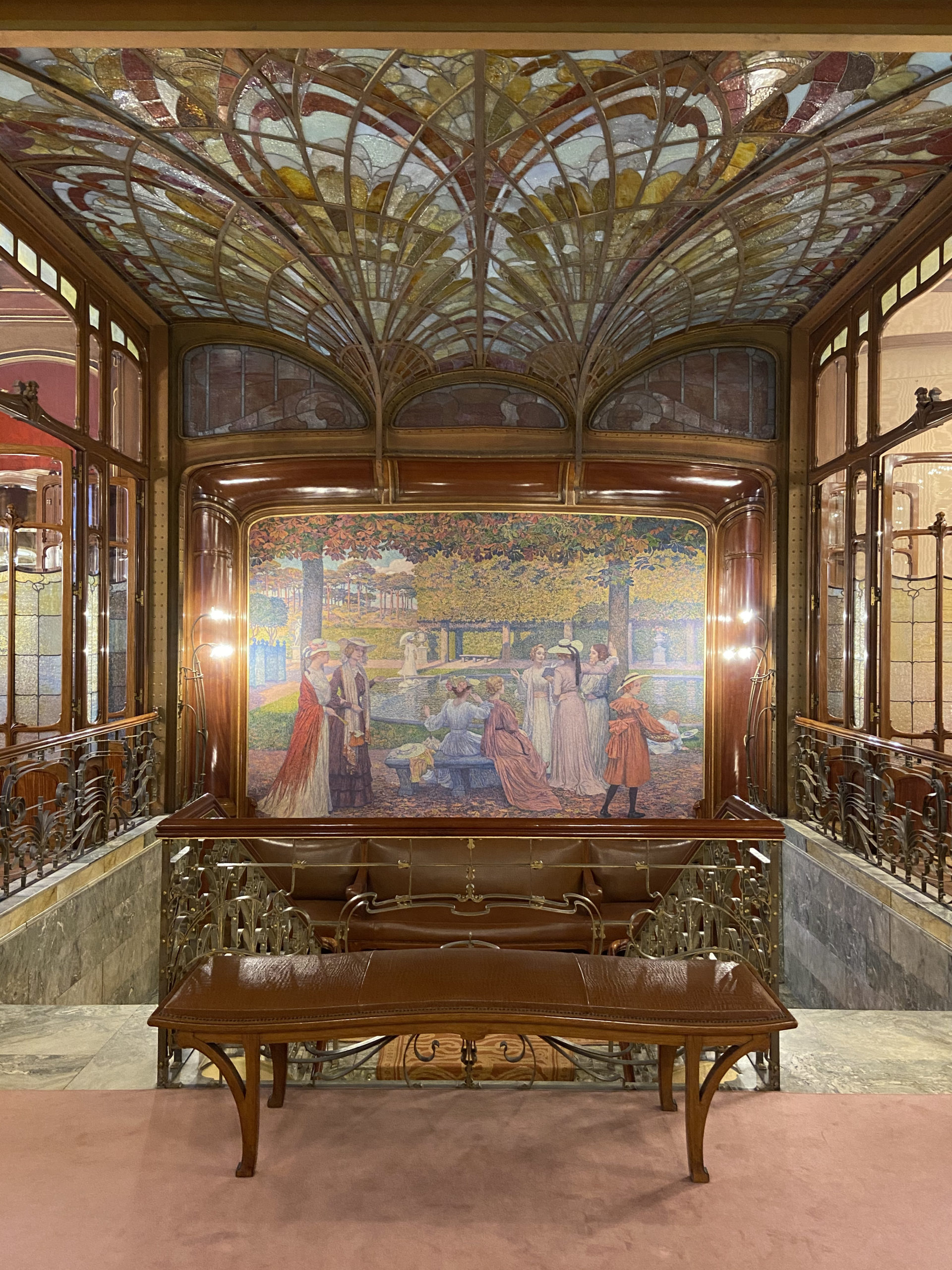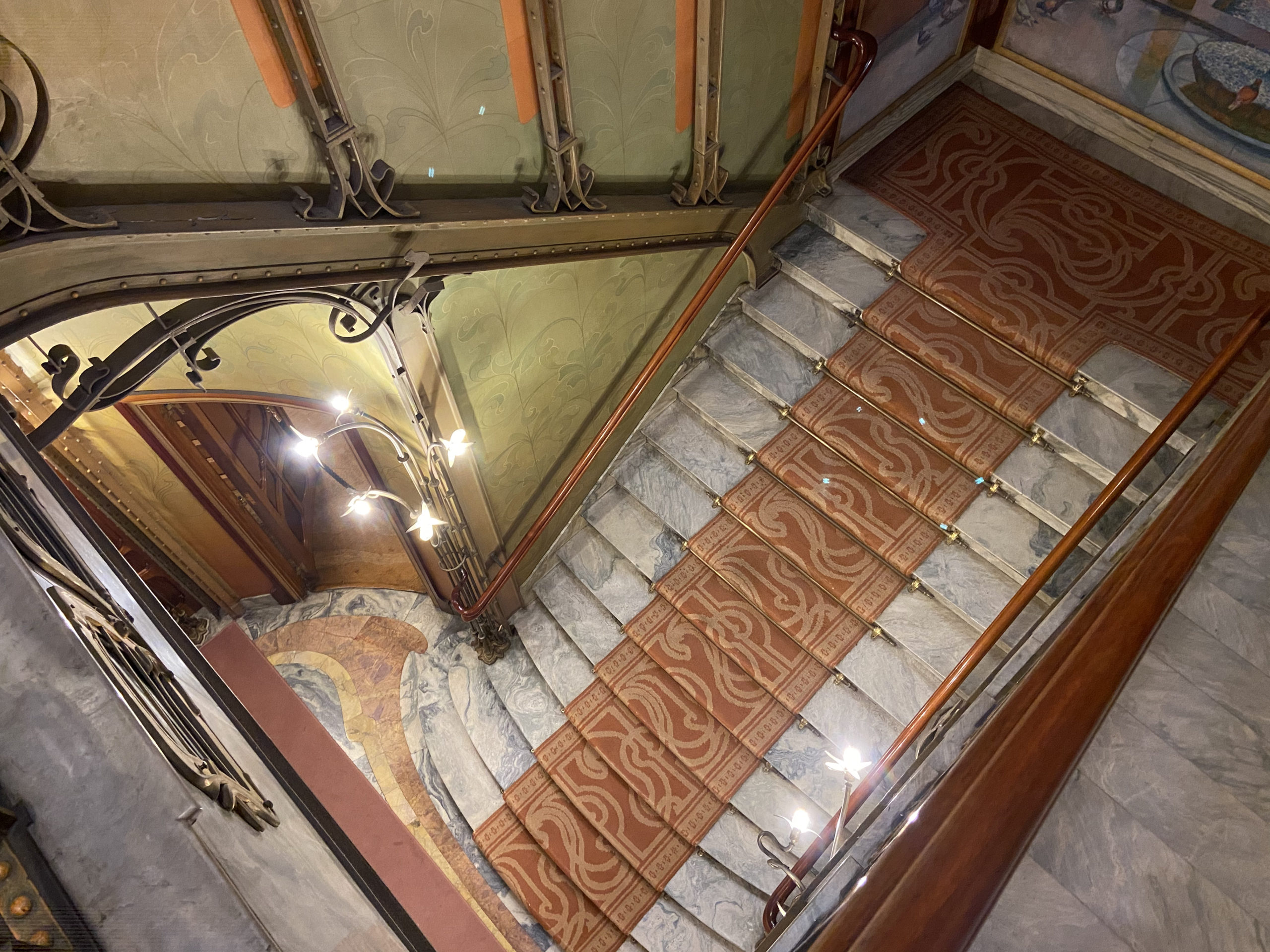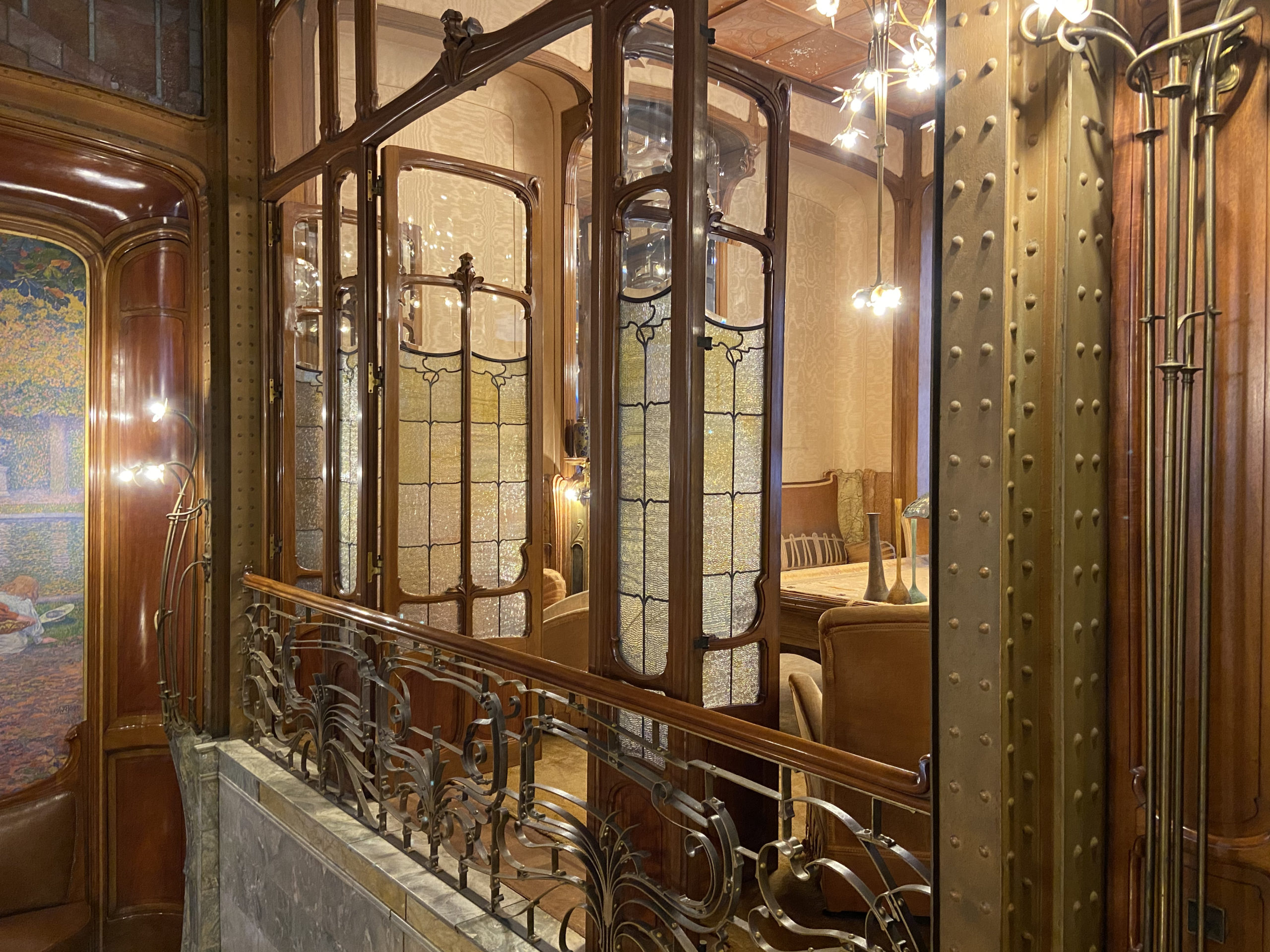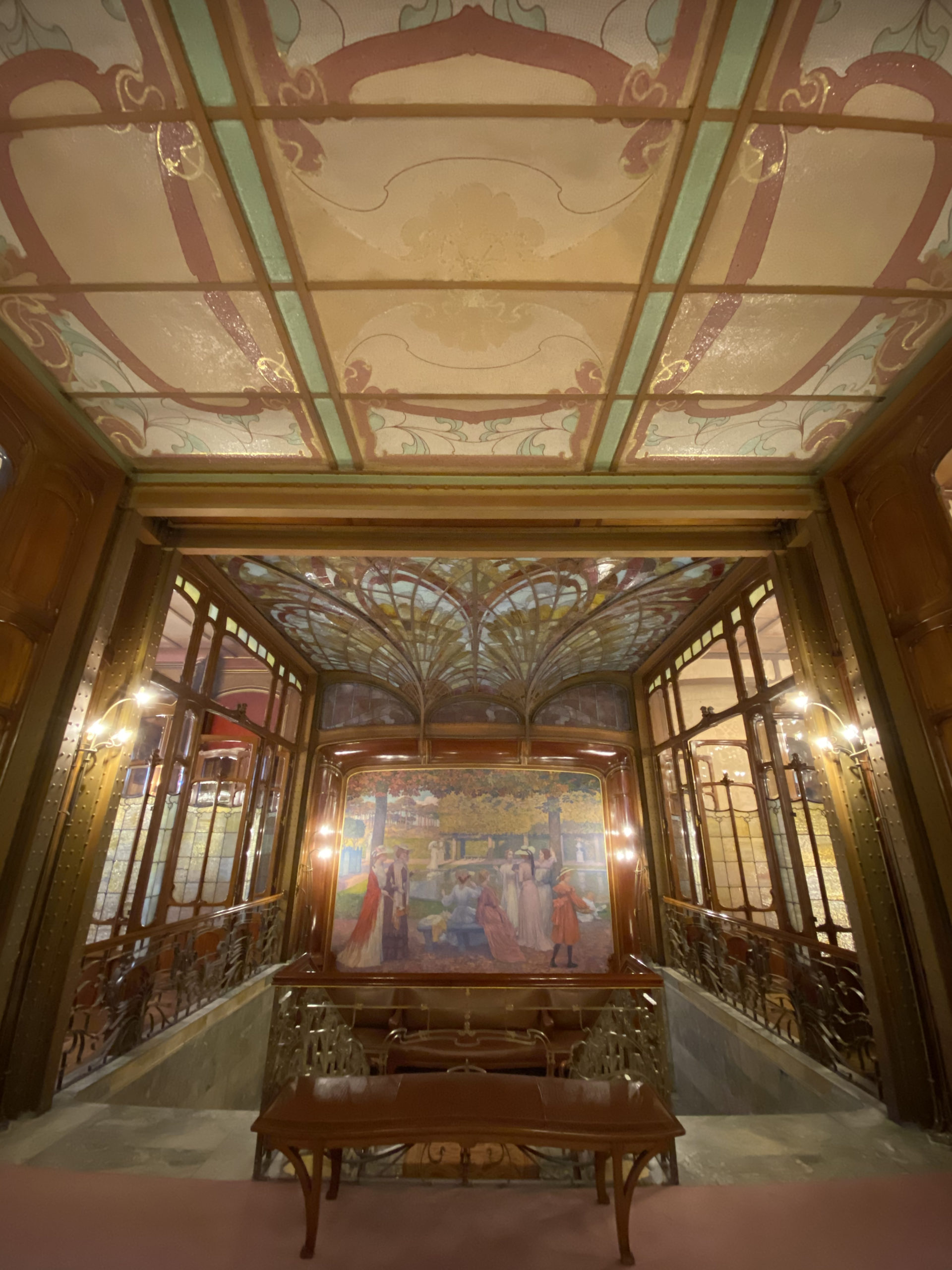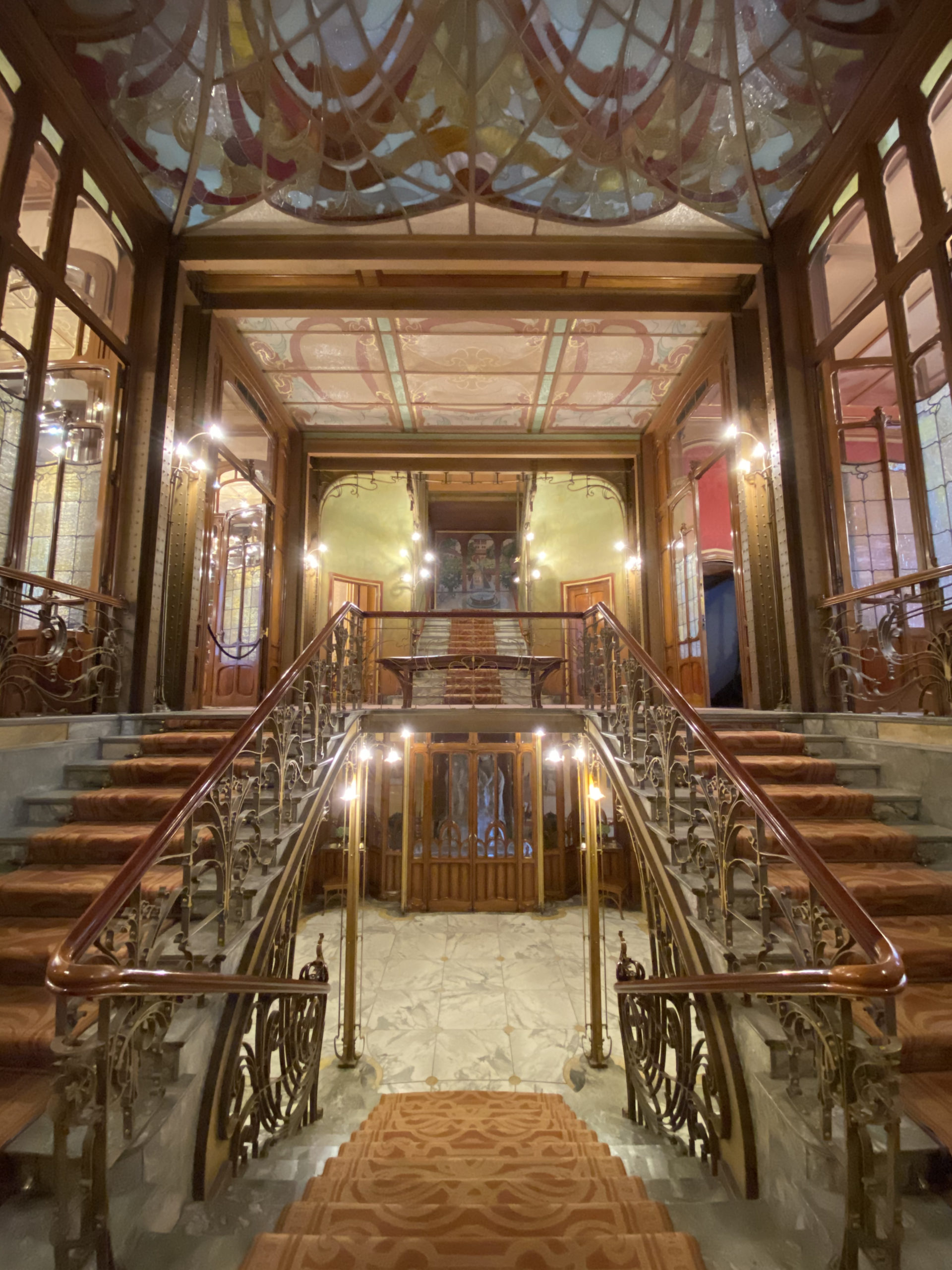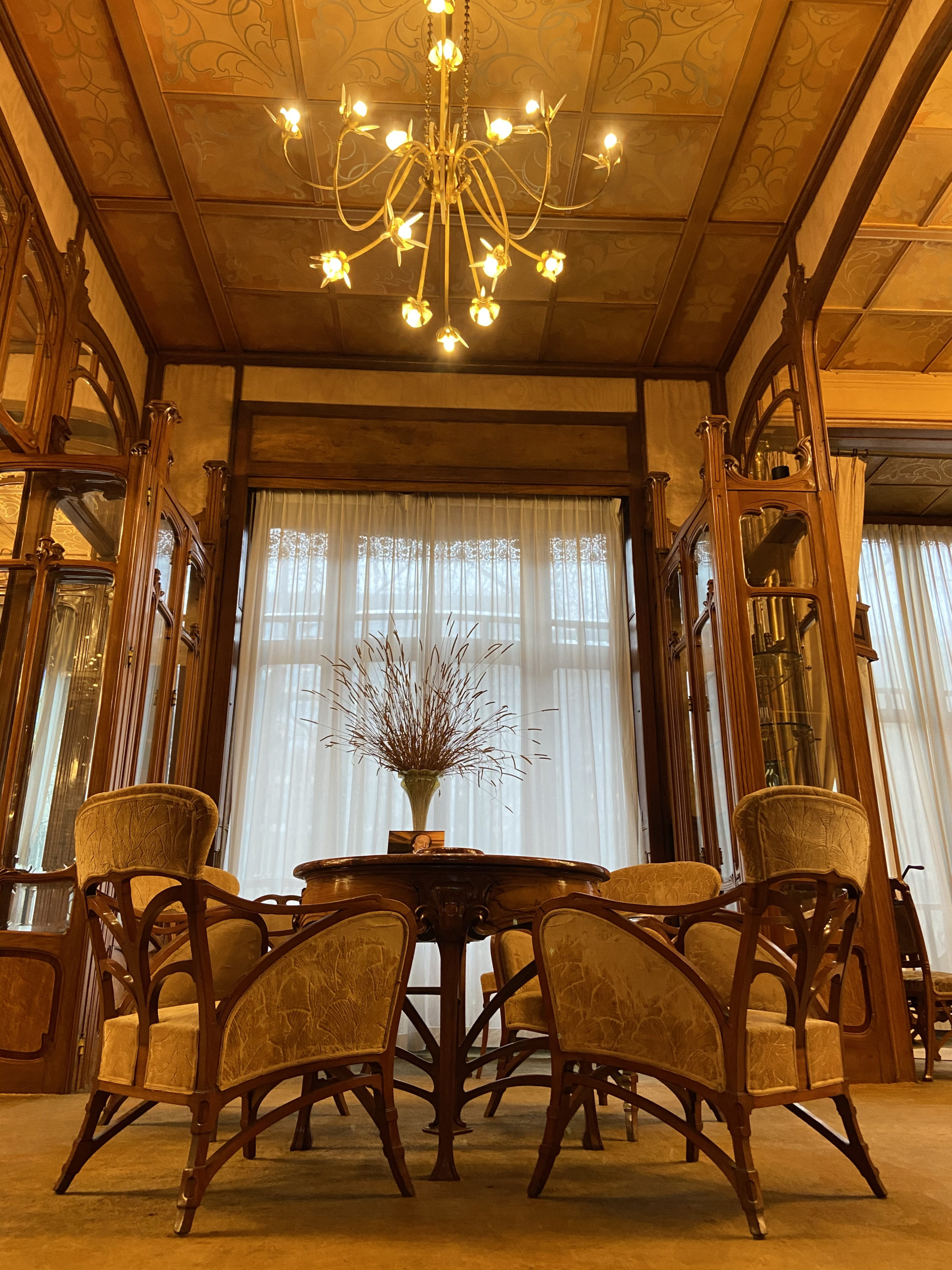Hotel Solvay open to the public
The house that Victior Horta designed for Armand Solvay becomes a museum.
The house that Victior Horta designed for Armand Solvay becomes a museum.
Alexandre Wittamer, the owner of the building, and Pascal Smet, Secretary of State for Urbanism and Heritage, have announced today that the Solvay House will be open to the public as from Saturday 23 January. This listed and iconic Art Nouveau building was designed and built by Victor Horta between 1894 and 1903 and is part of the UNESCO World Heritage List.
To thank Alexandre Wittamer for the role that his great-grandparents played in the preservation of this monument, Minister-President Rudi Vervoort and Minister for the Image of Brussels Sven Gatz have handed him today the Bronze Zinneke.
"I am enormously happy that we are able to open this Brussels Art Nouveau gem to all the people of Brussels and to everyone who visits Brussels. We owe this jewel to Victor Horta and Armand Solvay, of course, but also to the Wittamer family, who saved the house from demolition in the 1950s and have maintained it well all this time. That is why the Brussels Region is today giving the family a special recognition.
It was an absolute priority for me to open the Solvay House to the general public and I thank Alexandre Wittamer for having dared to take this step with us. This is a big step to make art nouveau the cornerstone of our city marketing and to show Brussels to the world as art nouveau capital. It is therefore very important that we can open up this exceptional gem to visitors.
The museums are open and respect health measures. I invite the people of Brussels to discover this new top museum from this weekend onwards," says State Secretary for Urbanism and Heritage, Pascal Smet.
"I am pleased that the Solvay House will frequently open to the public. This gives hope to the cultural and tourism sector, both of them suffering a lot because of the health crisis. From now on, both Brussels residents and tourists will be able to visit this Art Nouveau masterpiece in complete safety, and enjoy a dose of culture with a trip back in time. Thanks to this opening, Brussels will be able to further enhance its rich offer of cultural, heritage and tourist attractions. I am convinced that this way the cultural and tourist revival of our Region will receive a boost as soon as the health measures allow it," explains Rudi Vervoort, Minister-President of the Brussels-Capital Region.
"I'm very happy to award Alexandre Wittamer with a Bronze Zinneke. This statue, a miniature cast of the statue of Tom Frantzen in the Karthuizerstraat, is a tribute to Brussels residents who are informal ambassadors of our city. Welcoming people in a cosmopolitan, open, multilingual and people-oriented city. Like that Zinneke, a bastard dog: strong, streetwise, enterprising, complex and curious about the world. I find these characteristics in Alexandre and his family. His grandparents became the owners of the listed Hotel Solvay of our world-famous Brussels resident Victor Horta.
Given the history of the building and the initiatives taken by the Wittamer family to preserve this heritage gem, the Brussels Region has awarded the Bronze Zinneke to the Wittamer couple. Their descendant Alexandre Wittamer has received it from Minister-President Rudi Vervoort and Minister Sven Gatz, responsible for the Image of Brussels.
"It is an important moment for us. My grandparents bought the building in 1957 and saved it from demolition. They wanted to pass on their love for Victor Horta and Belgian Art Nouveau to future generations. What we are doing now with urban.brussels is following on from what we started last century. It is wonderful that both young and old can discover and rediscover Art Nouveau.
Brussels can be proud of its architects and artisans of the time," says owner Alexandre Wittamern.
The Brussels government wants to enhance the value of its heritage, in particular by making it more accessible, which explains the decision to open the Solvay House to the public. In line with this, the Brussels Region financed the creation of a website and online ticket sales for the Solvay House on the initiative of the Secretary of State for Urbanism and Heritage, Pascal Smet.
Anyone can now visit the house by reserving a ticket on the website www.hotelsolvay.be for an affordable fee of 12 euro.
To ensure that Horta lovers can easily plan their visit, a combination ticket with the Horta Museum and Hotel Hannon is being developed.
Art Nouveau and the Horta buildings provide a very attractive, specific tourism offer, an offer that until now was not structural, while the buildings were not always easily accessible. That is changing. After all, Brussels is the Art Nouveau capital and wants to keep that title.
Visit Brussels wants to keep using this asset both internationally and with the Belgian and Brussels visitors.
"The Solvay House is one of the absolute architectural Art Nouveau gems. Opening it up to the general public will enrich the museum offer and give Brussels an important tourism asset. We are convinced that this will improve the international reputation of our region," says Patrick Bontinck for Visit Brusssels
"For Brussels culture and tourism, it is great news that the general public can now admire this Art Nouveau gem. The City of Brussels values this art movement throughout the year by supporting many recurring events. These include the BANAD Festival, Artonov and Arkadia asbl and its guides,” explains Delphine Houba, alderwoman for Culture and Tourism for the City of Brussels.
Now that the general public can visit it, the Solvay House reveals a hidden treasure. It was protected in its entirety in 1977 and is one of the best preserved Horta buildings, thanks to the attention and renovations by three generations of the Wittamer family, who bought it in 1957 to establish a haute couture house. The renovations happened under the supervision of the “Commission royale des Monuments et des Sites” (Brussels heritage instance) and the heritage services of urban.brussels. Since 1989, the region has spent no less than ... euro for the renovation of this building. Urban.brussels has recently recognised the Solvay House as a museum institution, this way increasingly highlighting this heritage.
Description
Remarkable Art Nouveau mansion, designed by architect Victor Horta for industrialist Armand Solvay, son of Ernest Solvay, and his wife Fanny Hunter, from 1894 onwards. This mansion is a true blueprint of Horta’s ideas and one of the most successful creations of his career. He had an almost unlimited budget at his disposal and had a very good understanding with the client. Furthermore, this is one of Horta's best preserved buildings.
The building permit was submitted in July 1895, while the structural work was completed in 1898. Horta worked for several more years on the interior decoration; the last furnishing details were completed in 1903.
The plot is 15 m wide on Avenue Louise and 20-25 m deep, running through the block of houses as far as Rue Lens. The former stables can be found behind the garden.
The Solvay house is protected as a monument by the royal decree of 07.04.1988; the garden and the former stables are protected as a whole by the government decree of 22.04.1999. Like other Horta works in Brussels, the Solvay House is listed as UNESCO World Heritage since 2000.
Restorations
Over the years, the house suffered partial destructions, which were followed by restorations. In November 1944, a V1 bomb hit Rue de l'Ermitage. The air displacement that followed, destroyed the stained-glass dome on the main floor. In 1982, it was reconstructed by master glazier Timmermans, under the supervision of professor Georges Gyömörey. Twenty-five years before, in 1957, fashion designer family Wittamer-De Camps (Valens) acquired the house to use it as an atelier and collection presentation space. They saved the house from demolition and carried out renovations and restorations. The ground level of the facade was temporarily dismantled in 1958 in order to install two showcases displaying the firm's haute couture models (architects Grimaldi & Dehasse and Jean Delhaye). It was then restored by architect Georges Gyömörey of the Raymond Lemaire firm. Since 1988, it underwent several restorations under supervision of architect Jos Vandenbreeden: restoration of the ground floor, facade colours, rear facade, etc.
The street facade displays a sculptural and symmetrical approach, both subtle and powerful, and is the result of a relatively sober design in comparison to the lavish interior. In contrast to most contemporary Brussels architecture, the facade composition is not disconnected of the interior, but is its logical and elegant result on the street side.
The facade consists of four levels and, on the upper floors, three bays in blue stone and white stone. The rather low blue stone ground floor serves as a large plinth for the upper floors. It is a slightly curved extension of the pavement and forms a smooth transition to the central terrace above. On the left, the carriage entrance is sheltered by the protrusion of a stacked bay window on the upper floors; in the middle, a three-light window is flanked by two small windows; on the right, there is a wide window with a double metal jamb that forms the symmetrical counterpart of the carriage entrance.
The facade at the upper floor levels is hollowed out in the middle. The side bays of the middle storeys have a stacked bay window and are each crowned by a terrace. On the first floor, the bay windows are connected by broadly profiled terraces with slightly curved wrought-iron parapets; they are smoothly connected to the central bay by a concave wall section with two windows. Each bay is supported by two brackets that seem to merge into the ground floor. Their appearance is generously opened up by large windows between metal parapets, while two continuous cast-iron columns add rhythm. Wrought-iron window railings offer protection. The bay sides continue and form the fourth floor terrace walls. This storey contains windows with single or double metal jambs under a profiled cornice. The terraces are connected by a continuous cordon that functions as a lintel for the central window. Plain, chased modillions add rhythm to the slightly coved entablature; there is a particularly shallow vaulted wooden cornice.
The general stonecut is particularly elegant and varies per bay or storey. The joinery is exceptionally refined - such as the richly glazed oak door with wrought-iron latticework, the oak window frame with sashes or sliding windows, with double glass and ironwork - and so are the riveted wrought-iron parapets with arches and counter-arches in stylised plant shapes. The original ironwork colour was restored in 1988-1989.
The sober and rational rear facade received particular attention, which is unusual in the Brussels architectural context. It consists of four storeys, some staggered, crowned by a dormer - added later - in the most protruding section and five bays.
The brick facade contains white stone elements on a blue stone base. The windows are under an I-beam or basket arch. In the main section, the facade contains a terrace that gives onto the first-floor dining room, with a wrought-iron parapet between blue stone pedestals.
Interior
The Solvay House programme characterises the need for representation of the upper middle class in the 19th century and in this respect is based on fairly classical specifications. However, the way in which it was implemented here was radically new. Horta innovated the architecture of his time in several ways: he overhauled the classical spatial arrangement and used visible metal structures and unconventional materials in living spaces, resulting in highly transparent spaces; he made use of both overhead (through skylights) and lateral light and ensured comfort through natural air conditioning and real ergonomics of the whole and the furniture. More than a work of art, the house is almost a living and "intelligent" organism that responds to its inhabitants.
Interior The Solvay House programme characterises the need for representation of the upper middle class in the 19th century and in this respect is based on fairly classical specifications. However, the way in which it was implemented here was radically new. Horta innovated the architecture of his time in several ways: he overhauled the classical spatial arrangement and used visible metal structures and unconventional materials in living spaces, resulting in highly transparent spaces; he made use of both overhead (through skylights) and lateral light and ensured comfort through natural air conditioning and real ergonomics of the whole and the furniture. More than a work of art, the house is almost a living and "intelligent" organism that responds to its inhabitants.
General plan
The ground floor is intended for reception (carriage entrance, entrance hall, cloakroom, consulting room) and for the service areas (kitchen, pantry). The monumental staircase, splitting into two parts, departs from the hall in a beautifully orchestrated scenery in which both the impressive neo-impressionist painting “A Reading in the Garden” (1902) by Théo Van Rysselberghe and the large glass dome in coloured glass play a special role. The ground floor is entirely designed for receptions. On the street side are the billiard room, the lounge and the music room in enfilade, while the garden side hosts the dining room and the pantry. All rooms are connected by glass walls that can be opened completely. The third floor is arranged around the platform that has been developed as a winter garden. At the front are the Solvay couple’s study rooms and bedroom; on the garden side a toilet room and the children's study and play room. A second narrow corridor runs along the outer wall and the only bathroom can be found on the mezzanine floor. On the third floor are the bedrooms of the children and governess and on the fourth floor five rooms for the staff. Horta built the whole around two large skylights. One of them brightens the first part of the staircase (from the ground floor to the main floor) and the other brightens the part starting at the main floor.
Structures, circulation, light
The structure is mainly based on a metal framework, which makes the ground plan of the main floor almost akin to a free plan. These beams, columns and other metal supporting elements are not hidden but are fully part of the decor, which, with its mixture of challenging materials, was completely innovative in private architecture. The vault structure of the ceiling is a result of the same concept and has also remained visible.
The first two storeys are structured around the staircase hall with its double staircase, which is perpendicular to the carriage entrance. This entirely open space forms the beating heart and backbone of the house. A more private staircase rises to the third floor from the main floor. There is also a service staircase leading from the very bottom to the upper staff rooms and receiving light from the windows in the rear facade; there is also a lift, while the service lift was demolished in 1958.
In the entire house, Horta cleverly plays with natural light. It enters from the front (west) and rear (east) facades as well as through two large skylights on the roof; the first dome brightens the staircase from the entrance hall to the main floor, the second one does the same with the staircase from the main floor to the upper floors. The metal framework of the partially glazed roof made this construction possible. The daylight is intensified by artificial light (electric from the start). Horta exploited its potential in several chandeliers he designed, some of which fitted with dozens of light bulbs.
Air conditioning
Horta designed a natural air conditioning system based on the inseparable ventilation and heating combination. An adjustable vent system ventilates the house continuously. The heating system is double, with a hypocaust under the monumental staircase, receiving air from the garden, and several steam radiators, combined with ventilation openings in the facade. This permanent air refreshment in the house also prevents condensation on the marble and glass.
Materials and colours The technical sophistication goes together with an exceptional refinement of ingeniously used and combined materials. At least twenty-three different marble types, mostly from Italy and North Africa, and seventeen types of wood, have been distinguished and create an interior with an unequalled individual character. Green and orange tones predominate in function of using a complementary colour range. In each room, the colour choice differs and flat tones, transparency, colour on colour or gradient colours are combined. The graphic dynamics that directly influence the overall perception of the room are based on the interplay of sculpted or painted arches and counter arches in stylised plant forms.
Several visual artists participated in the decoration of the Solvay House: sculptors Pieter Braecke, Victor Rousseau and painter Théo Van Rysselberghe.
Rue Lens 27 hosts a building with former stables, a coach house and a residence, later an Art Nouveau garage, designed in 1899 by architects Constant Bosmans and Henry Van de Velde; these architects also designed the Solvay library in Leopold Park. The building contains two elaborate facades, one on the street side and the other on the garden side and is the result of a particularly studied design with very fine architectural details. It is possible that Horta gave advice on the design of this annexe.
The brick facade contains white stone and blue stone elements, three storeys of unequal height and six bays on the upper floors. On the ground floor, there are carriage gates under a segmental arch with a supple frame and a key; the one on the left is from 1927, the one on the right from 1906, both designed by the same architect duo. On the upper floors, there are rectangular and square windows under I-beams. In the upper storey, there is a glazed door that leads to an arched balcony with a wrought-iron parapet decorated with plant motifs.
The stairwell bay shows a slightly curved protrusion between corner blocks, two stone top sections flank the wooden cornice and one of the two doors has been replaced.
The garden facade also has a carefully designed finishing. White stone and blue stone elements in two storeys, with a large U-shape on the ground floor, characterise the brick facade. A large glazed canopy on metal brackets in whiplash style stands in front of the recessed porch. The zinc roof has six fireplaces. The original carpentry and ironwork have been preserved.


